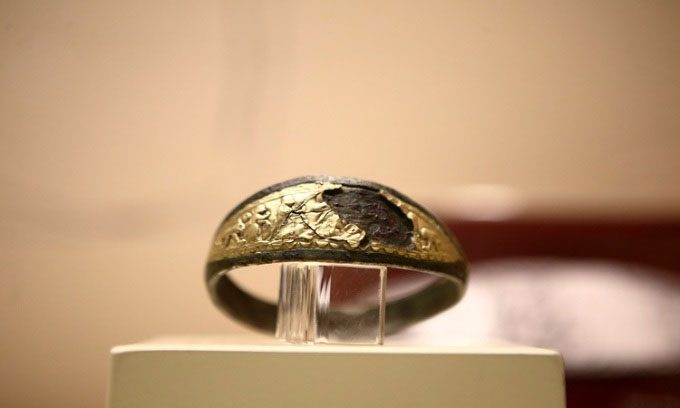The ancient bracelet discovered by a farmer is among the few rare jewelry pieces that remain from the Hittite civilization.

The bracelet on display at the Çorum Museum. (Photo: Daily Sabah)
A nameless farmer living in the Çitli village of the Mecitözü district found the ancient bracelet while working on his farm and brought the artifact to the Çorum Museum. Experts discovered that this artifact originated from the Hittite civilization and began restoration work. Subsequently, they included the bracelet in the museum’s collection. This exquisite artifact is made from copper, tin, silver, and gold, adorned with various symbols of the Hittites, including images of the god Itar/Auka and his two attendants, Ninatta and Kulitta.
Resul Ibiş, an archaeologist at the museum, stated that the bracelet will be displayed for visitors. “After an initial assessment, we found that this is a one-of-a-kind artifact,” Ibiş commented. It dates back to the 13th century B.C. Although the bracelet is deformed and missing some parts, experts have restored it. According to the archaeological team, very few Hittite jewelry pieces exist today, and this bracelet will reveal the adornment style of this civilization.
Çorum is home to the ancient city of Hattusa, which was built by the Hittites. The city was designated a UNESCO World Heritage site in 1986 due to its well-preserved architectural works and archaeological remains. Hattusa served as the capital of the Hittite Empire during the late Bronze Age.





















































